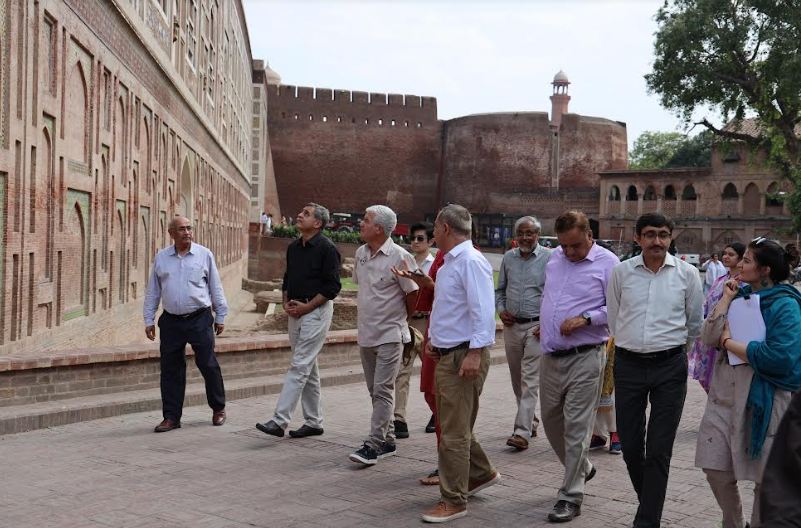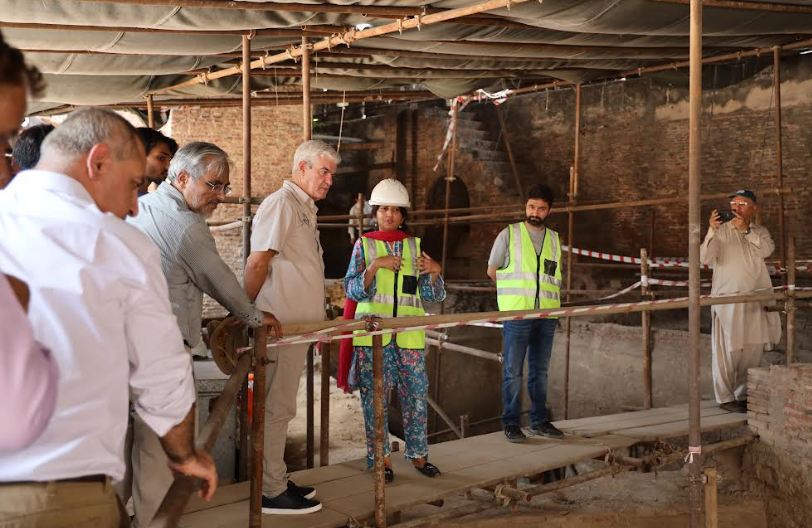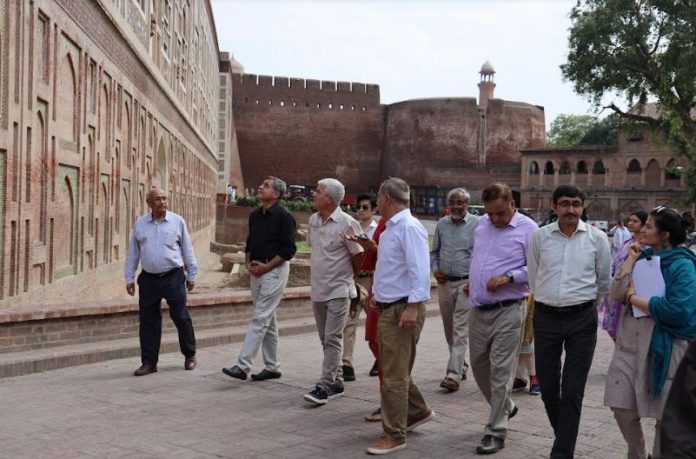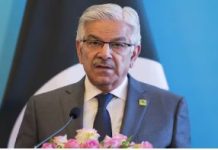Portuguese Ambassador to Pakistan Visits Lahore Fort, a UNESCO World Heritage Site
Lahore, MAY 27: /DNA/ – Fredrico Silva, the Portuguese Ambassador to Pakistan, visited the UNESCO World Heritage site of Lahore Fort on Friday to witness one of the most significant ongoing restoration projects in Pakistan. The restoration work is being undertaken by the Aga Khan Trust for Culture (AKTC) and its country affiliate, the Aga Khan Cultural Service-Pakistan (AKCSP), in close partnership with the Government of Punjab and the Walled City of Lahore Authority (WCLA).
Mr. Tausif Ahmad, the CEO of AKCSP, accompanied by Mr. Wajahat Ali, the Director of Conservation and Design, gave a tour of the restoration projects visiting various sections of the Lahore Fort.

The Ambassador had the opportunity to witness the meticulous restoration efforts undertaken for the world renowned Sheesh Mahal along with other monuments including the Naulakha Pavilion, Royal Kitchen, Loh Temple, and the Fort’s iconic 400-year-old Picture Wall, hailed as one of the largest murals in the world.

Expressing his deep admiration for the restoration work, His Excellency Fredrico Silva stated, “The beauty of Lahore and Lahore Fort is indescribable. The Conservation Works and Projects undertaken by the Walled City of Lahore and Aga Khan Cultural Service are magnificent, supporting the growth of local artisans and ensuring the preservation of these assets for future generations.” He was particularly astounded by the beauty of the Sheesh Mahal and the Naulakha Pavilion, acknowledging that the commendable conservation efforts will endure for generations to come.
This visit by the Portuguese Ambassador highlights the relationship between Pakistan and Portugal, paving the way for enhanced cultural cooperation and exchange.
CEO of AKCSP, Mr. Tausif Ahmad, commended the decade-long partnership with the Walled City of Lahore, with whom the Aga Khan Cultural Service has been working as technical partners since 2014. He expressed the aim to complete the conservation of the major monuments within Lahore Fort in the next 5 to 7 years. Mr. Wajahat Ali explained the best practices in conservation followed by AKCSP, which have garnered several UNESCO Awards for exceptional conservation work, including the conservation of the Shahi Hammam (Royal Bathhouse) and several monuments in Gilgit-Baltistan.
The AKTC and its country affiliate, AKCSP, have been actively involved in the rehabilitation of the Walled City of Lahore and the conservation of its Mughal-era monuments since 2007 through its Historic Cities Program. In collaboration with the Government of Punjab and the Walled City of Lahore Authority, the program has achieved significant milestones, including the restoration of the Wazir Khan Mosque, the Shahi Hamman, and the Royal kitchen. The program has also successfully restored major forts, traditional settlements, mosques, and public spaces in the high valleys of Gilgit-Baltistan province, such as the Baltit and Altit Forts in the Hunza Valley, as well as the Shigar Fort and Khaplu Palace in Baltistan. Several of these projects receive co-funding from France, Norway, Germany, and the USA. Ongoing restoration work at Lahore Fort focuses on conserving the world’s largest Picture Wall, the Sheesh Mahal, and various other monuments. Recently, a €22 million loan agreement was approved for the Heritage and Urban Regeneration of Lahore (HURL) project, promoting tourism, creating revenue-generating activities (especially for women), and strengthening resilience against climate change. The project also includes establishing a Visitor Interpretation Center within Lahore Fort Summer Palace and revamping existing galleries to showcase restored artifacts.

















